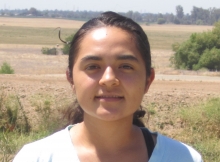Anabel Castillo
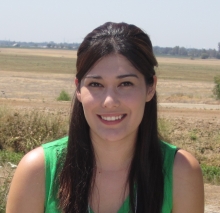 |
Major: Psychology
Home City: San Jacinto, CA
Contact: acastillo7@ucmerced.edu
Faculty Mentor: Professor Jitske Tiemensma
|
Anabel Castillo is a third year Psychology major undergraduate student with a minor in Cognitive Science. She has been a research assistant for Dr. Jeffrey Gilger and Dr. Jitske Tiemensma at UC Merced. Her various research projects involve studying emotion suppression in Latina women with breast cancer, training effects on spatial information processing, and searching for an adaptive behavioral variant in individuals with ADHD and LD. This summer she will be working alongside Dr. Linda Cameron on a SmokefreeTXT project, which is a mobile text message service designed for adults that are trying to quit smoking. When Anabel isn’t doing research or schoolwork, she is enjoying time working with children. Anabel has spent a year as an employee of the Merced Unified School District, she works as an after school program assistant with elementary school children. She also enjoys spending time with her parents and brothers. Her motivation is her family, who encourage her to keep working hard towards a better future and higher education. Upon graduating, Anabel plans on pursuing a Ph.D. in Health Psychology.
Effects of Social Ostracism
Anabel Castillo, Alexander Khislavsky, PhD, and Jeffrey Gilger, PhD, Psychology; University of California, Merced
The aim of this study was to show that ostracism could exacerbate ADHD characteristics. We tested the effect of ostracism on attention in healthy college-aged volunteers. Using a repeated-measures design Cyberball, we exposed parallel groups to 'ostracism' or 'inclusion'. We then used CCPT-II, which is a computer assessment that measures sustained attention. The individuals ostracized showed increased difficulties on CCPT-ll measures of sustained attention. Findings seem relevant to ADHD children, as their symptoms may intensify by ostracism.
Christian Castillo
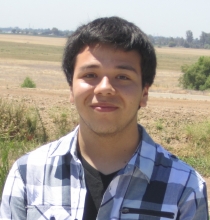 |
Major: Mechanical Engineering
Home City: Ontario, CA
Contact: ccastillo7@ucmerced.edu
Faculty Mentor: Professor Gerardo Diaz
|
Christian Castillo is a third year undergraduate student in Mechanical Engineering. He plans to graduate in the fall of 2016. Christian currently holds two officer positions, one in Bobcat Band, and another in Nikkei Student Union. Christian is also the first in his family to attend a university and hopes to become a great role model for them as well. Christian hopes to learn a lot about sustainable energy by participating in this great research opportunity.
Biochar Production from Almond Shells using Pyrolysis Induced by Dielectric Breakdown
Christian G. Castillo, Andres Munoz-Hernandez, Gerardo Diaz*, PhD, School of Engineering; University of California, Merced
Biochar has many applications in agriculture. Researchers have found that biochar helps plants retain more water, increase crop production, and mitigate climate change. To produce the biochar, a novel technique known as dielectric breakdown is used to induce biomass pyrolysis. Pyrolysis is the thermal decomposition of a material when there is little or no oxygen. The decomposition of the biomass also produces carbon monoxide and hydrogen which can be utilized as a renewable fuel, but for the purposes of this experiment, it was not collected. In this experiment, pyrolysis was induced through dielectric breakdown using a high voltage power supply of 10,000 Volts and less than 100 Watts of power. Power outputs and times were recorded. Biochar samples obtained during the test are currently being analyzed to test the quality of the biochar. By requiring a low amount of power to produce biochar, the process can be easily implemented and become an economically viable option to increase crop production.
Carlos Hernandez
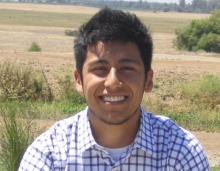 |
Major: Computer Science and Engineering
Home City: Avenal, CA
Contact: chernandez22@ucmerced.edu
Faculty Mentor: Professor Alberto Cerpa
|
Carlos Hernandez has currently completed his third year in the field of Computer Science and Engineering. Carlos is a first generation scholar and grew up in a tiny town called Avenal, which is in the heart of the Central Valley, surrounded by agriculture. As he began his journey at UC Merced, he has been looking at ways in which to apply his knowledge gained towards giving back to the community. He will work on a research project involving irrigation over the summer, which deals in ways on how to efficiently deliver water to crops.
Building Energy Modeling With EnergyPlus
Carlos Hernandez, Alberto E. Cerpa PhD, Alex Beltran, School of Engineering; University of California, Merced
In the US, buildings consume 8% of the worldwide energy. The main component of energy consumption is the, heating, ventilation, and air conditioning (HVAC) system, which accounts for 42% of energy utilized and makes it a critical priority to reduce energy consumption. Recent research efforts have attempted to reduce building energy consumption while providing suitable quality of service to its occupants. In this project, we have created a detailed energy model from a building at the University of California, Merced using the EnergyPlus simulation program along with the OpenStudio add-on. This energy model was built using the building’s specifications along with the HVAC schedules currently implemented in the building. We verified the fidelity of the energy model by comparing the energy consumption results from EnergyPlus against the actual building energy consumption. By using the same weather patterns along with the same HVAC component configuration, such as building thermal zones, we were able to replicate the simulated model to the actual building. Through the use of this model, we can simulate optimizations and expect the same results when applied to the actual building. This energy model provides a framework for future research. In the future, we plan to integrate this energy model with a Model Predictive Control (MPC) framework, which seeks to optimize HVAC control in order to minimize HVAC energy consumption, while still remaining within comfort constraints of its occupants.
Mark Reynolds
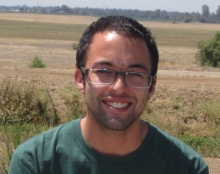 |
Major: Biological Sciences
Home City: Tehachapi, CA
Contact: mreynolds7@ucmerced.edu
Faculty Mentor: Professor Michael Beman
|
Mark Reynolds is a fourth year Biological Sciences student emphasizing in Microbiology and Immunology with a minor in Environmental Science and sustainability. In Mark’s early youth he had always envisioned himself attending medical school and becoming a physician. Plans changed upon enrolling at the University of California, Merced where a firm interest now lies in understanding various life and earth science sub-disciplines. After receiving his bachelor’s degree, he plans to obtain a doctoral degree in Microbiology or Molecular and Cell Biology. He then hopes to apply the skills gained to a career involving academic research and/or teaching. In addition to being selected to the 2014 CAMP cohort, Mark is the only undergraduate to receive a scholarship to attend the UC sponsored 9th Biennial Association of Natural Resources Extension Professionals (ANREP) conference in Sacramento, CA. Along with his studies, Mark is employed at UC Merced as Lead Peer Advisor at the Office of International Affairs in addition to being a member of the stats crew for various UC Merced home games. Mark is also the Webmaster for the Vernal Pool Reserve Team in the Engineering Service Learning Program at UC Merced. Non-academic hobbies of Mark’s include watching/playing basketball, attending concerts, traveling, reading, and spending time with those important to him.
Quantifying Microbial-Mediated Methane Fluxes in High Elevation Lakes Experiencing Excess Nitrogen Deposition in Yosemite National Park
Mark C. Reynolds and J. Michael Beman, PhD; School of Natural Sciences; University of California, Merced
Yosemite National Park, spanning three California counties, is located downwind of agricultural and urban hubs including the productive Central Valley. Consequently, the park is vulnerable to deposition of pollutant nitrogen (N) from various anthropogenic sources. In many ecosystems N deposition can jeopardize ecosystem functioning and water quality as a result of increased eutrophication, but how this phenomenon affects biogenic gas emissions via microbial activity in freshwater systems has largely been overlooked. Here, we demonstrate that well-mixed oligotrophic lakes can be a source of methane emissions with the magnitude of the flux depending on elevation and N deposition rate. After calculating surface methane profiles among seven high elevation lakes in Yosemite National Park, our results affirm that the concentration of methane fluxes are positively correlated with an increase in elevation and, furthermore, higher nitrogen deposition rates. To address the conundrum of methane cycling in such oxygenated lakes, we will investigate the following in future studies: possible symbiotic substrate cycling in micro-anoxic zones among different metabolizers, substantial uncoupling of in situ methane production over consumption during both light/dark conditions, and how varying concentrations of inorganic N affect methane emission rates. Our findings provide new insight on how increased industrialization and usage of synthetic fertilizers in the Central Valley can impact atmospheric methane concentrations and its link to the Greenhouse Effect.
Diana Rodriguez
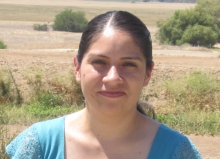 |
Major: Biological Sciences
Home City: Bakersfield, CA
Contact: drodriguez25@ucmerced.edu
Faculty Mentor: Professor Rudy Ortiz
|
Diana Rodriguez is a fourth year student majoring in Biology with an emphasis in Microbiology and Immunology. She transferred from Bakersfield College in the fall of 2012 and expects to graduate in the spring of 2015. Diana is also a first generation student whose ultimate academic ambition is to obtain a Ph.D. in Microbiology and conduct her own research in mechanical microbiology. She plans to focus on microbial pathogens. When not in school, Diana also enjoys being around children and typically spends her summers teaching arts and crafts to young children.
Antagonism of Angiotensin, but not the Mineralocorticoid Receptor, Ameliorates ANG II-dependent Hypertension through Reduction of Sodium Reabsorption
Diana L. Rodriguez, Rudy M. Ortiz, PhD, School of Natural Science; University of California, Merced
The renin-angiotensin aldosterone system (RAAS) is a hormonal cascade that controls systolic blood pressure (SBP) and fluid balance. This system is normally activated by sodium depletion with the production of renin in the kidney, which, in turn, regulates the synthesis of angiotensin II (Ang II). Two major effects of Ang II are the stimulation of aldosterone secretion and vasoconstriction, both of which lead to elevated blood pressure. However, the role of aldosterone in the control of blood pressure is still not completely understood. In this study, we hypothesized that both mineralocorticoid receptor (MR) and angiotensin type 1 receptor (AT1) blockade ameliorate hypertension by lowering sodium reabsorption. To test this hypothesis, we measured plasma aldosterone, epithelial Na+ channel (ENaC) expression, urinary Na+ excretion, and systolic blood pressure (SBP) in five groups of Sprague-Dawley rats: 1) control, 2) Ang II, 3) Ang II + AT1 receptor blocker (ARB), 4) Ang II + mineralocorticoid receptor blocker (Epl), and 5) Ang II + ARB + Epl (Combo). Treatments with ARB and combo reduced SBP levels and increased urinary sodium excretion and ENaC expression, as opposed to control and Epl infused groups. Accordingly, these data suggest that MR antagonism and ARB have an opposite effect on sodium reabsorption, and the inability of Epl to reduce SBP further suggests that Ang II-mediated events are major contributors to the elevation of SBP, independent of aldosterone effects.
Keith Saechao
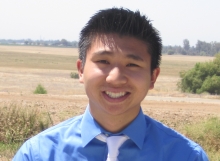 |
Major: Mechanical Engineering
Home City: San Francisco, CA
Contact: kseachao9@ucmerced.edu
Faculty Mentor: Professor Gerardo Diaz
|
Keith Saechao is a fourth year undergraduate student in Mechanical Engineering and researches solar energy and plasma gasification, looking specifically to design, build and test solar collectors that are constructed with copper minichannels. Keith is also a tutor for the Calvin E. Bright Success Center here at UC Merced, where he tutors trigonometry, calculus one and two for UC Merced students. He is also a dedicated member of the Hmong Student Association where he and members of the organization strive to empower and spread awareness of the Hmong culture, while also providing opportunities for high school students to achieve higher education. On top of that, Keith was a member of the Americorp, where he completed 300+ hours of service teaching K-12 lectures and promoting the importance of energy conservation in the Merced and Los Angeles districts. Keith enjoys playing all sports, dancing, poetry, and traveling. He knows the importance of spending time with family, giving back to the community and assessing your passion before assessing your capabilities to do something.
Design and Test of a Copper-Based Mini Channel Solar Water Heating System
Keith Saechao, Van Duong, and Gerardo Diaz, PhD; School of Engineering, University of California, Merced
The process of heating water accounts for a significant portion of energy consumption in the world. Scientist and researchers have developed solar water heaters that are slowly being adopted in the residential as well as the commercial sectors. The main issue with these current solar water heaters relates to the efficiency in transferring the heat from the sun to the working fluid. The objective of our project is to further the advancement of solar water heaters through the addition of copper-based mini channel collectors. Prior to our project, there has been a prototype design of an aluminum-based mini channel collector. Although the results obtained for this aluminum collector showed improvements with respect to standard flat-plate collector designs, operation at higher temperatures requires other materials such as copper. The overall system to be implemented will include the collector, pump, piping, and sensors. A control logic will be implemented that will consist of input signals, measuring temperatures at the inlets, outlets, and within the water storage tank. The collector will be tested in single phase operating mode and also in steam generation mode. Computational models are being developed to compare with test data and allow for system optimization.
Angela Macedo Andrade
Angela Macedo is a fourth year undergrad majoring in Bioengineering. She does research in the field of Material Science, fabricating 3D carbon electrodes and 1D carbon nonmaterial t aid in the design of transducer material platforms. Aside from school and having a part-time job, Angela dedicated some of her time to educating middle school students about college and peek their interest in math and science as a tutor and mentor through the Cal-Teach program. She is also involved with SACNAS as Publications and Advertising chairwoman. She makes information about the organization readily available on campus and helps build a network of students and resources that will guide minorities to success in college. On her free time she likes relaxing with family, running, and knitting.
Silicon-coated CNFs for Renewable Energy Applications
Angela Macedo Andrade, Jennifer Lu, PhD, and Jasper Zeng, School of Engineering, University of California, Merced
Carbon nanofiber (CNF) based materials have been widely explored as conduits for transporting electrons in energy storage (batteries and supercapacitors), energy conversion (photoelectrochemical solar cells, fuel cells) and bio-sensing. In addition to their high electrical conductivity, CNFs can be used as scaffolds to host functional Si-containing polymers, which are hypothesized to render CNFs with electrocatalytic and electrochemical activities. Systematic studies indicate that polymers can be electropolymerized conformly on CNFs. In this work, CNFs are directly grown on stainless steel substrates (SS) by catalyst-assisted chemical vapor deposition (CVD). We have shown that mildly acid treated CNFs can achieve good storage capacity and exhibit oxygen reduction capability. This investigation focuses on establishing a process to fabricate silicon-containing polymers on CNFs and pyrolysis via examination of energy storage and conversion properties. This hybrid has shown larger capacitance and enhanced ORR capabilities, making it a promising new material in renewable energy applications.
Presley Ramirez
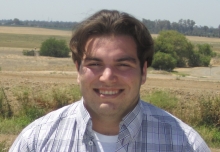 |
Major: Earth Systems Sciences
Home City: Sacramento, CA
Faculty Mentor: Professor Teamrat Ghezzehei
|
Sustainable Approach for Dust Suppression
Presley Ramirez and Teamrat Ghezzehei, PhD, Earth System Science, University of California, Merced
Dust emission is a major environmental problem that has negative implications on health and industrial applications. This problem is expanding for a number of reasons, including (a) climate change induced increase in drought frequency and magnitude; as well as (b) rapid growth of solar power plants in areas where the soil has been protected by fragile bio-crust. Current technologies for suppression of dust emission are involve either slowing down wind using breakers (e.g., plants or mechanical structures) or (bio)chemical stabilization of soil surface. Most stabilizers are toxic and expensive, which limits their application. The objective of this study is to test inexpensive and non-hazardous approaches of soil stabilization. Recent research in our group has revealed a process of soil stabilization by small amount of cementing agents. Wetting and drying cycles in the presence of dilute solution of biologically derived long-chain polymers results in strong adhesion between soil particles. In this study we tested whether dilute solutions of Xanthan Gum and PGA can be used as soil stabilizers. Both of these polymers are mimics of plant and bacteria derived polymers that are known to form stable soil aggregates. The commercially available compounds we used are widely used as additives in the food industry and are non-toxic. We tested the effectiveness of this approach, by subjecting the soil crusts to artificial wind energy. The results of this research can have an important implication in dust suppression in areas where air-borne diseases are prevalent and near solar-power facilities.






